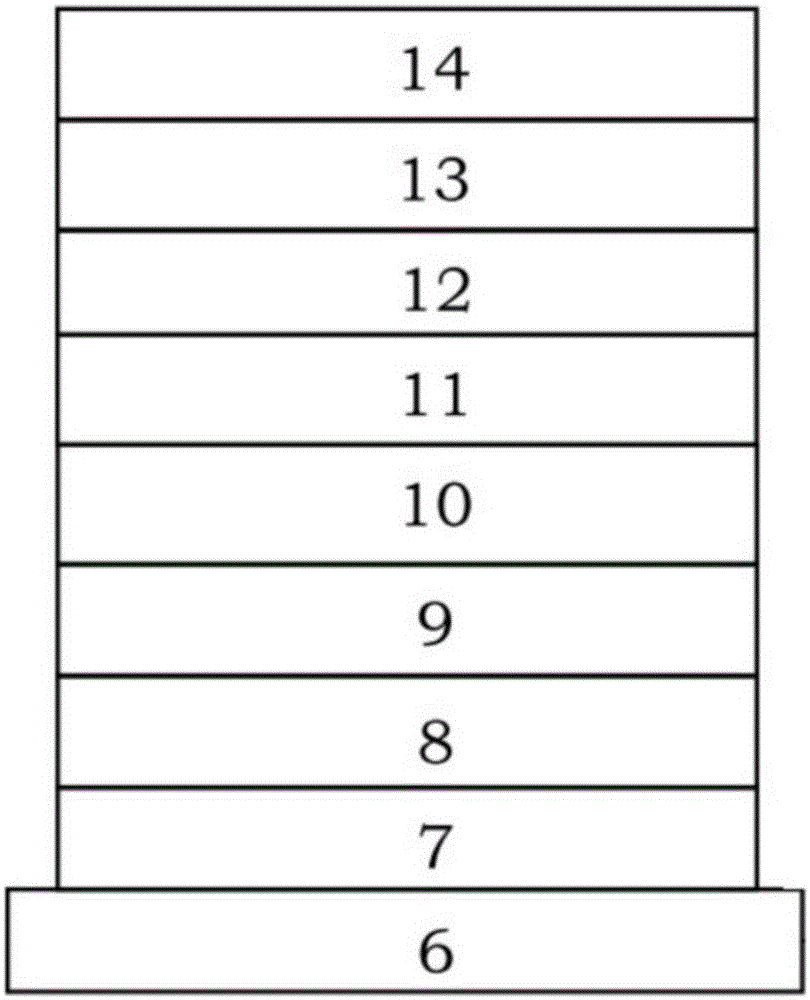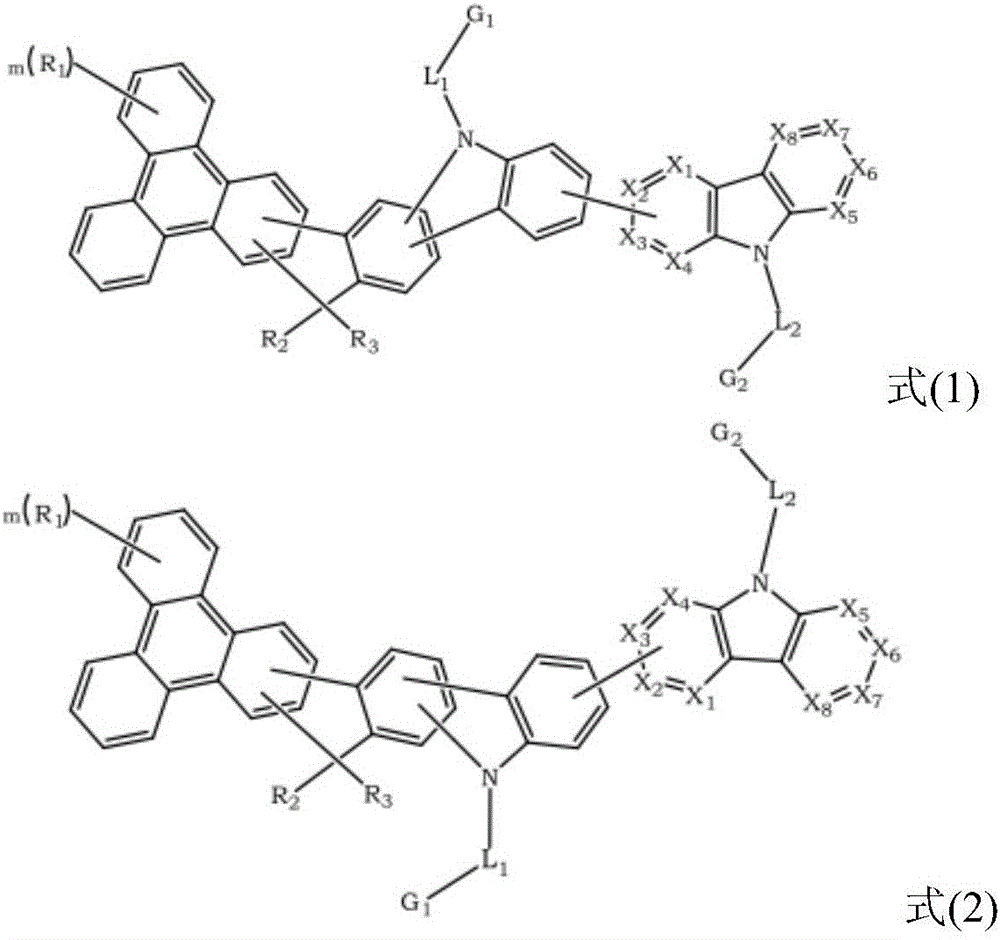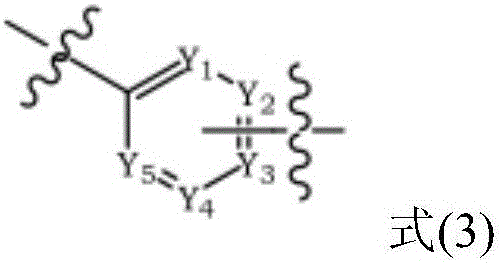Triphenylene-based fused biscarbazole derivative and use thereof
A technology of biscarbazoles and triphenylenes, applied in the field of compounds, can solve the problems of lack of materials, half-life, efficiency and unsatisfactory driving voltage, etc.
- Summary
- Abstract
- Description
- Claims
- Application Information
AI Technical Summary
Problems solved by technology
Method used
Image
Examples
Embodiment 1
[0081] Embodiment 1: the synthesis of compound EX10
[0082] Synthesis of 2-(biphenyl-2-yl)-7-bromo-9,9-dimethyl-9H-fluorene (2-(biphenyl-2-yl)-7-bromo-9,9-dimethyl-9H- fluorene)
[0083]
[0084] 35.2g (100mmol) 2,7-dibromo-9,9-dimethyl-9H-fluorene (2,7-dibromo-9,9-dimethyl-9H-fluorene), 21.8g (110mmol) biphenyl- 2-base boronic acid (biphenyl-2-ylboronic acid), 2.31g (2mmol) four (triphenylphosphine) palladium (tetrakis (triphenylphosphine) palladium, Pd (PPh 3 ) 4 ), 75ml 2M sodium carbonate (Na 2 CO 3 ), 150 ml of ethanol (EtOH) and 300 ml of toluene (toluene) were degassed and placed under nitrogen, followed by heating at 100° C. for 12 hours to react. After the reaction was completed, the mixture was cooled to room temperature, and the organic layer was extracted with ethyl acetate and water, and the extracted organic layer was dried with anhydrous magnesium sulfate to remove the solvent to form a residue, which was passed through a tube filled with silica gel. T...
Embodiment 2
[0115] Embodiment 2: the synthesis of compound EX16
[0116] Synthesis of 2-(10,10-dimethyl-10H-indeno[2,1-b]triphenylene-12-yl)-4,4,5,5-tetramethyl-1,3,2-di Oxaborolane (2-(10,10-dimethyl-10H-indeno[2,1-b]triphenylen-12-yl)-4,4,5,5-tetramethyl-1,3,2-dioxaborolane )
[0117]
[0118] 10.7g (25.3mmol) 12-bromo-10,10-dimethyl-10H-indeno[1,2-b]triphenylene, 7.7g (30.3mmol) bis(pinacolate) diboron, 0.3 A mixture of g (0.26mmol) tetrakis(triphenylphosphine) palladium, 7.4g (75.4mmol) potassium acetate (potassium acetate) and 300ml 1,4-dioxane was degassed and placed under nitrogen, then heated at 90 °C for 16 hours. After the reaction was completed, the mixture was cooled to room temperature, and the organic phase was separated and washed with ethyl acetate and water, and then dried with anhydrous magnesium sulfate, and the solvent was removed under vacuum to form a residue. The residue was purified by column chromatography packed with silica gel (hexane-dichloromethane) to ...
Embodiment 3
[0146] Embodiment 3: the synthesis of compound EX27
[0147] Synthesis of intermediate IX (intermediate IX)
[0148]
[0149] 5.5g (11.8mmol) 10,10-dimethyl-12-(2-nitrophenyl)-10H-indeno[2,1-b]triphenylene, 30ml triethyl phosphite, 15ml 1, The mixture of 2-dichlorobenzene was placed under a nitrogen atmosphere, followed by heating at 160° C. overnight for the reaction. After the reaction was completed, the mixture was cooled to room temperature, and 200 ml of methanol was added to the cooled mixture and stirred, and after suction filtration, a precipitate was formed. Using a mixture of hexane and dichloromethane as the eluent, the precipitate was purified by column chromatography packed with silica gel to obtain 2.1 g of a yellow product with a yield of 41%.
[0150] Synthetic intermediate X (intermediate X)
[0151]
[0152]1.9g (4.4mmol) intermediate IX, 1.2g (5.8mmol) iodobenzene, 0.85g (8.8mmol) sodium tert-butoxide and 0.5ml (0.5mmol) tri-tert-butylphosphine were...
PUM
 Login to View More
Login to View More Abstract
Description
Claims
Application Information
 Login to View More
Login to View More - R&D
- Intellectual Property
- Life Sciences
- Materials
- Tech Scout
- Unparalleled Data Quality
- Higher Quality Content
- 60% Fewer Hallucinations
Browse by: Latest US Patents, China's latest patents, Technical Efficacy Thesaurus, Application Domain, Technology Topic, Popular Technical Reports.
© 2025 PatSnap. All rights reserved.Legal|Privacy policy|Modern Slavery Act Transparency Statement|Sitemap|About US| Contact US: help@patsnap.com



